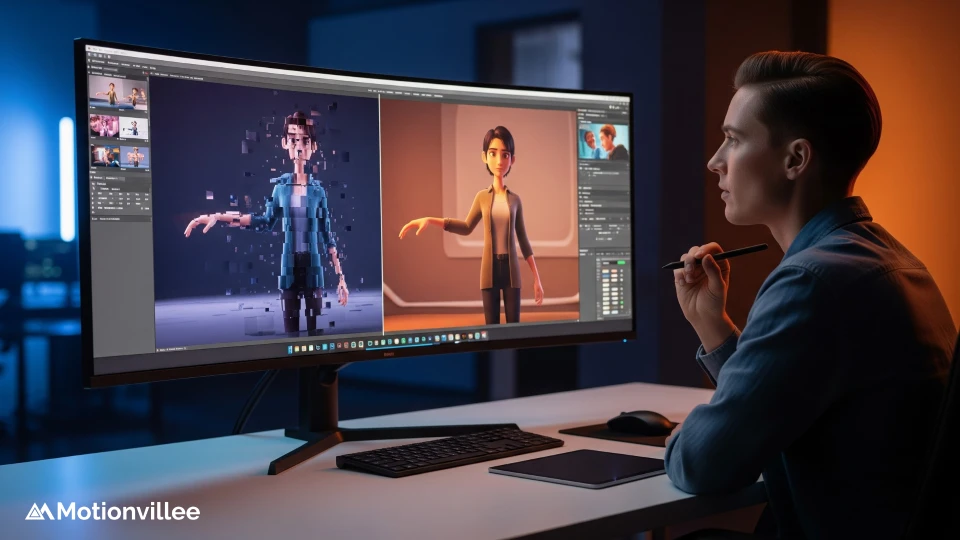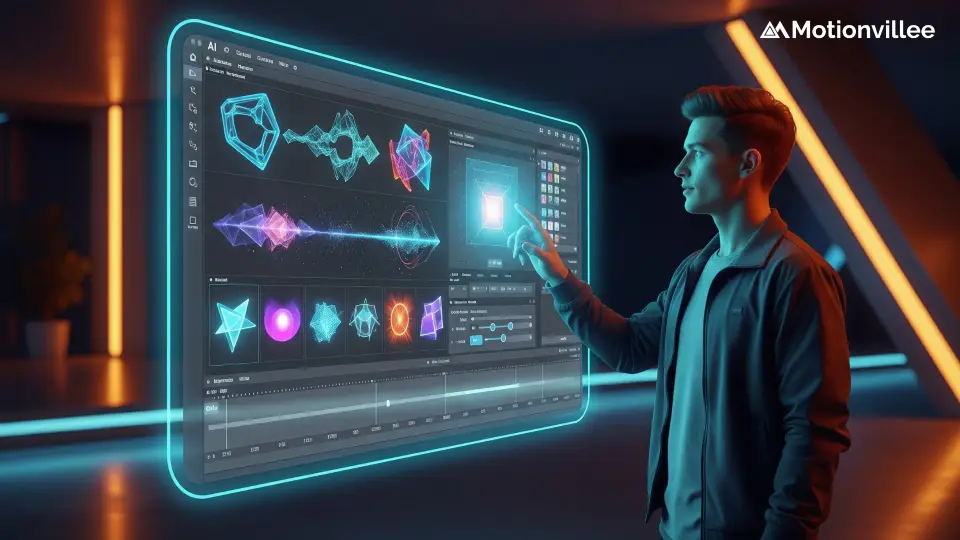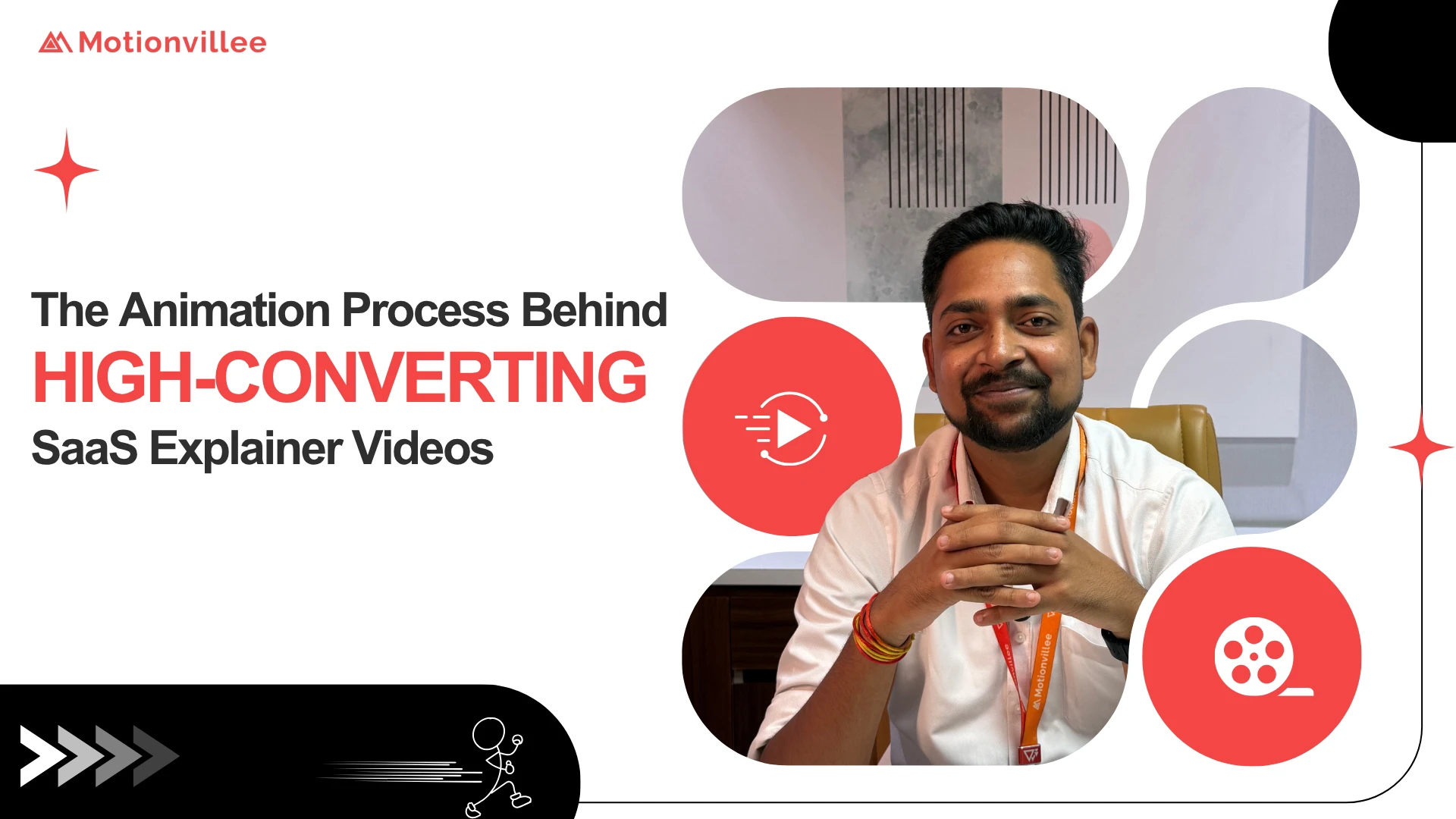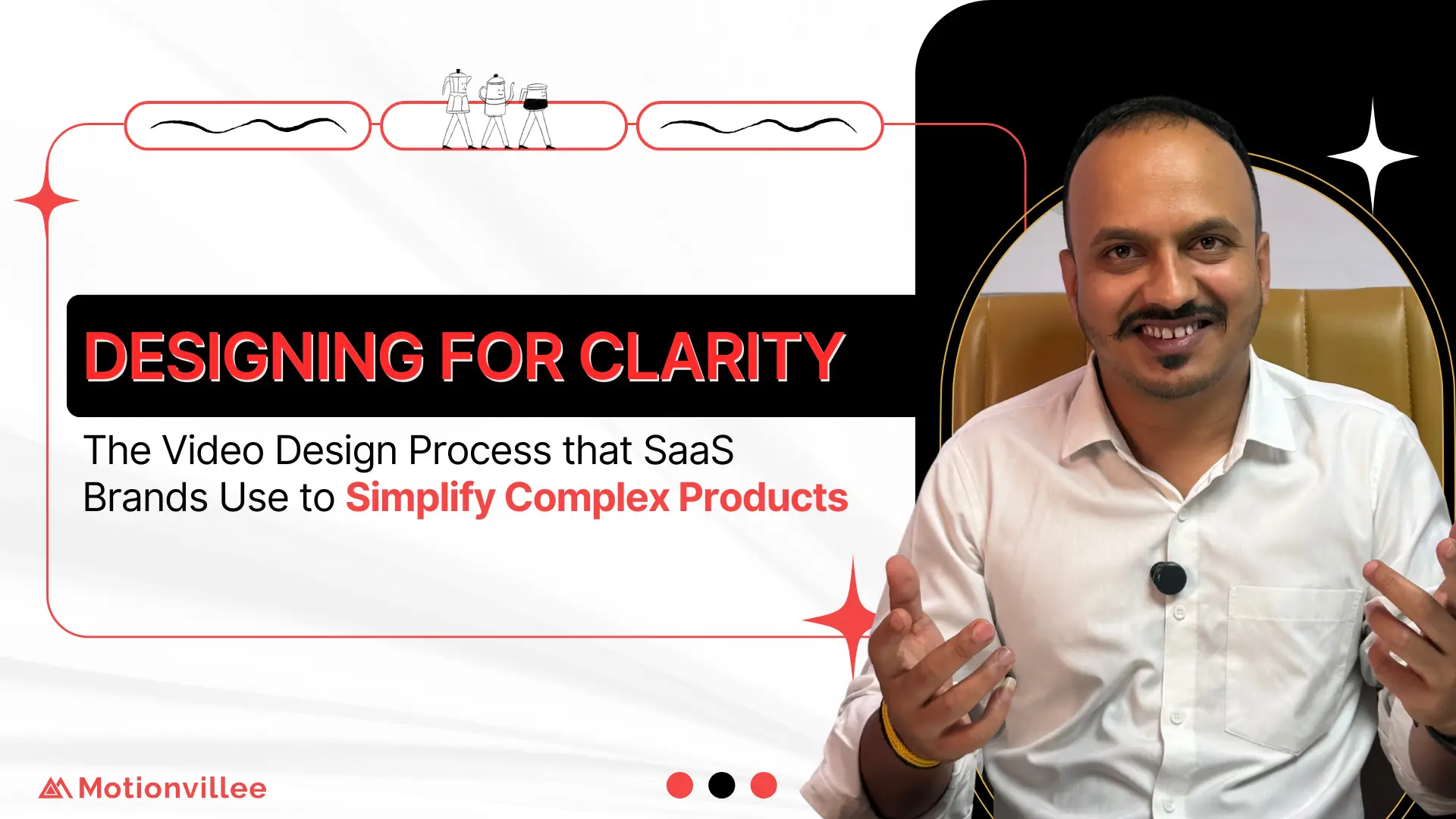AI in Video Production: Where Technology Meets Storytelling
In this interview, we explore how artificial intelligence is reshaping the way videos are imagined, produced, and delivered. At Motionvillee, innovation has always been part of the process. While creativity forms the foundation, AI in video production now accelerates how ideas come to life, from storyboarding and design to motion and editing.
In this conversation, Ankit, a team lead overseeing concept, pre-production, and post-production, shares how AI has become an integrated creative partner rather than just a technical shortcut. With experience across storyboarding, illustration, animation, and motion graphics, he offers a grounded look at how AI is transforming the modern video production workflow.

How much have you used AI in your workflow so far?
“I started using AI about two years ago, first for concept visualization and image generation.”
Ankit recalls that early on, AI helped him turn abstract scripts into clear, storyboard-ready concepts. Today, it plays a role in almost every stage, storyboarding, illustration, animation, and even editing.
“AI speeds up repetitive work so I can focus more on creative direction and problem-solving,” he explains. Rather than replacing the artist, AI enhances the process, turning imagination into visuals faster and more efficiently.
What’s one AI tool you rely on most, and why?
“A tool I really depend on is Vmake, it solves a very real problem: low-quality footage.”
When clients send low-resolution clips, Vmake allows him to upscale them to HD or even 4K without losing sharpness. The same platform also handles background removal and image-to-video generation.
“It saves hours of manual cleanup,” he says. “AI tools like this streamline our animated video production pipeline, allowing us to deliver better results in less time while maintaining quality.”
PROMPT ENGINEERING: HOW TO GET BETTER AI RESULTS IN VIDEO PRODUCTION
Prompt engineering is simply the skill of asking AI tools the right questions in the right way to get better results. It’s the difference between getting generic output and getting exactly what you need. In video production, mastering prompt engineering can cut your revision time in half.
Here are the five things that make prompt engineering work:
1. Define the Task Clearly
- Tell the AI exactly what to create. Don’t say “make an animation.” Say “create a 3-second animation of a person clicking a button.” The clearer your task, the better your result. Prompt engineering starts with knowing what you want and saying it directly.
2. Be Specific & Add Context
- More details = better results. When you’re using prompt engineering for video production, include specifics: colors, style, mood, speed. Instead of “make it professional,” say “use blue tones, flat design style, and keep it calm and steady.” The AI uses these details to shape its response.
3. Give Clear, Step-by-Step Instructions
- Write your prompt like you’re giving instructions to a team member. Be exact. Don’t say “make it look good.” Say “use smooth transitions, keep text large, add a subtle shadow effect.” Prompt engineering is about removing guesswork, the more precise your instructions, the closer the output matches your vision.
4. Describe Your Audience
- Tell the AI who will watch this video. “This is for busy SaaS executives who want quick, clear explanations” is very different from “This is for design students learning animation.” By defining your audience in your prompt, the AI adjusts tone, pacing, and complexity automatically.
5. Ask Questions That Invite Options
- Instead of “Should this be fast or slow?”, try “Show me three different speeds for this animation and which feels right?” This type of prompt engineering, asking open questions, gives you more material to choose from and often reveals creative directions you hadn’t thought of.
Why Prompt Engineering Matters for Video Production
Prompt engineering isn’t complicated, it’s just about communicating better with AI. “When I started using prompt engineering properly, my workflow got faster,” Ankit explains. The key is being specific, clear, and descriptive. When you master prompt engineering, you spend less time redoing work and more time being creative. Your AI tools work smarter because you’re telling them exactly what you want.
What are the biggest challenges of using AI in motion design?
“The main challenge is consistency. You can never get the exact same result twice.”
While AI accelerates production, it often struggles with continuity. Even small prompt changes can alter the look and feel, which makes brand consistency difficult.
“There’s also a creative control issue,” Ankit adds. “AI can drift from the emotion or tone we want. It needs human guidance to stay aligned with the story.” For him, AI in video production works best as an assistant, powerful, but still requiring the human eye for refinement and emotional accuracy.

Can AI match the storytelling of traditional animation?
“AI can automate, but it can’t feel.”
Ankit credits AI for mastering the technical side, from rotoscoping and color grading to walk cycles and transitions, tasks that once took hours now take minutes.
But storytelling, he says, remains deeply human. “Storytelling is about rhythm, empathy, and meaning. AI can replicate technique, not emotion.” For now, he sees AI as an enabler that amplifies human creativity, not a replacement for it.
What AI techniques will soon become standard for designers?
“Concept visualization, color grading, and text-to-video will soon be part of every designer’s workflow.”
Ankit explains how AI will handle technical repetition: color matching, tone balancing, and generating camera movements automatically from scripts or sound cues.
“These tools will take care of the mechanics,” he says, “so designers can spend more time shaping stories and visual direction.” In his view, the creative edge in B2B video production will belong to those who combine AI efficiency with strong storytelling instincts.
How is AI changing the path for young motion designers?
“AI has lowered the entry barrier, but raised the creative bar.”
For young designers, AI enables professional-quality results faster than ever. Yet, it also means that simply knowing software isn’t enough.
“AI can do the execution,” Ankit notes, “but storytelling, design sense, and taste are what make you stand out.” He believes the next generation of creatives will be defined not by how well they use AI, but by how intelligently they direct it.

The Creative Perspective on AI in Video Production
For Ankit, AI in video production is not about replacing human creativity but empowering it. “It helps us work smarter, not faster for the sake of speed. The goal is still the same, tell a story that connects.”
At Motionvillee, AI has become a natural part of the SaaS video production ecosystem, enhancing visualization, precision, and efficiency without losing the human touch that makes every video meaningful.
About the Team Lead
Ankit is a Team Lead at Motionvillee, overseeing concept, storyboarding, design, animation, and post-production. With years of cross-disciplinary experience, he combines creative direction with technical innovation to produce videos that communicate clearly and resonate deeply.
🎥 Ready to integrate AI into your next video project?
Discover how AI in video production can transform your explainer video production and animated video production strategy. Let Motionvillee help you combine technology and creativity to tell your brand’s story.






